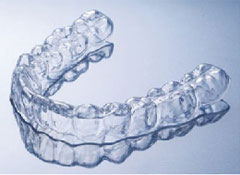What are the different forms of invisible orthodontics?
Currently, the隐形 orthodontic technology has been fully clinically applied in the dental departments of many hospitals, including the 454 Hospital of the PLA, gaining the favor of beauty lovers. Many people who plan to undergo orthodontic treatment visit the hospital. So what kinds of invisible orthodontics are there?
The 454 Hospital of the PLA is a national Class Three Grade A hospital. Its dental department, after nearly 60 years of development, has accumulated rich experience in tooth restoration and beautification. The department is a certified institution of the American Angel Invisible Numerical Control Orthodontic System. Dr. Ma Ling, deputy director of the dental department of the 454 Hospital, is a member of the International Orthodontic Union and an authorized orthodontist of the Invisible Angel Era. In terms of tooth alignment, she has rich clinical experience and solid theoretical foundation, and is proficient in diagnosing and treating various dental beautification projects such as tooth alignment, tooth whitening, precision attachments, and fixed bridges.
According to experts, invisible orthodontics is one of the most advanced orthodontic technologies in the world today, and currently there are four forms.
1. Ceramic bracket correction: This requires a monthly follow-up visit to the hospital, where only the archwire can be seen. The correction effect is obvious, and the cost is about 9,000 yuan.
2. Lingual hidden correction: Although lingual braces have the advantage of being aesthetically pleasing and unnoticeable, this method of fixing brackets on the lingual side may hinder the normal function of the oral cavity, causing many discomforts, and also makes it very inconvenient for doctors to operate.
3. Transparent pressure tray corrector: Based on the patient's facial morphology, personalized design is carried out. Through computer three-dimensional imaging technology simulating the movement of teeth, each corrector produced will give the teeth a sense of force when worn, moving them towards the position designed by the corrector. Usually, a new corrector is replaced every two weeks. The teeth will gradually move from their initial deformed state to a normal arrangement. The length of the correction time depends on the severity of the patient's malocclusion, generally requiring about six months to one and a half years.
The first three types are generally aimed at teenagers over 14 years old and adults. There is another type aimed at children under 14 years old, which is a functional corrector rather than an invisible corrector. Invisible orthodontics is more aesthetic and comfortable, and can be freely removed and worn in special occasions, thus not affecting adult social activities. Currently, the most mature brand domestically belongs to the Angel Era.
